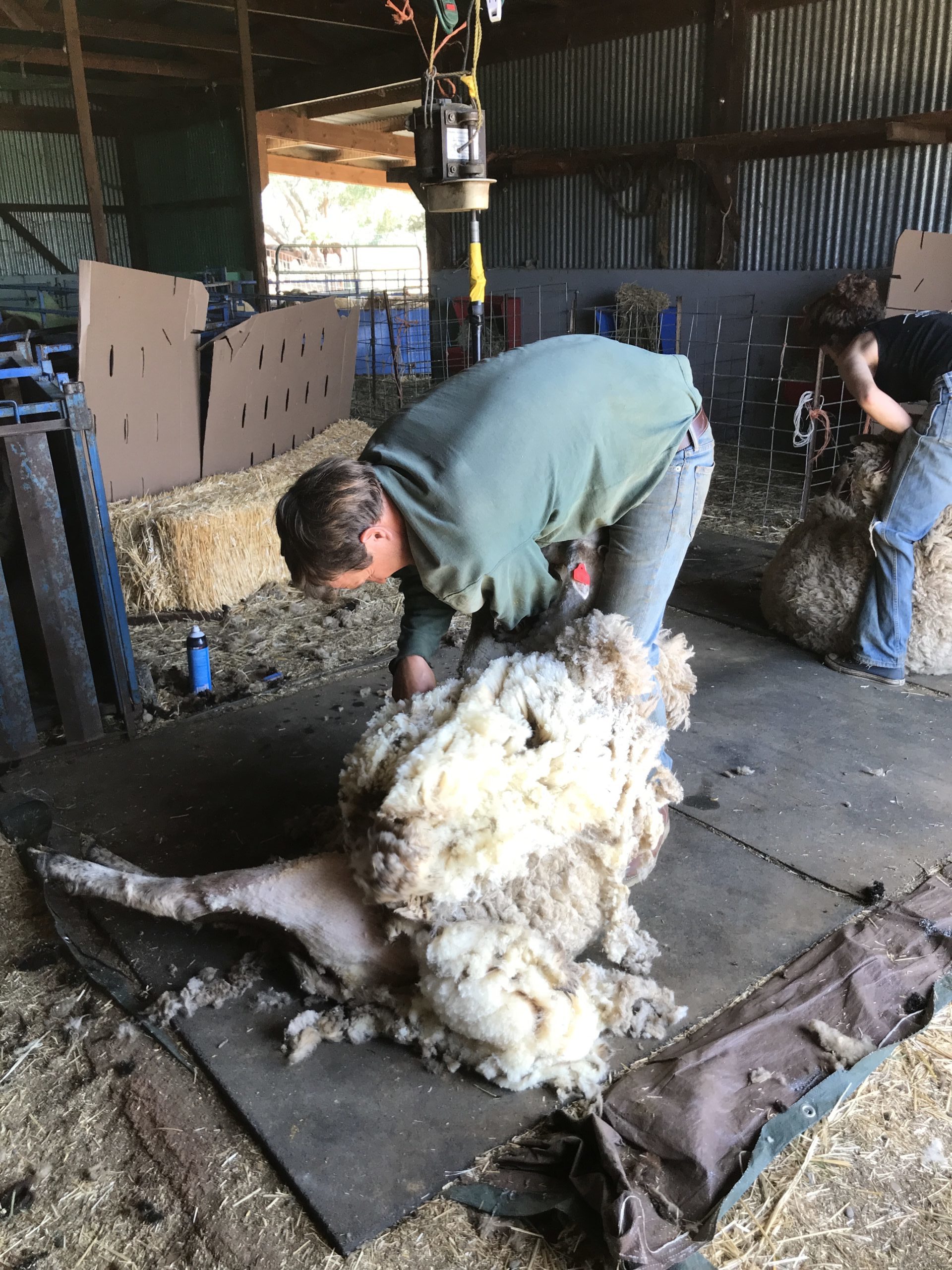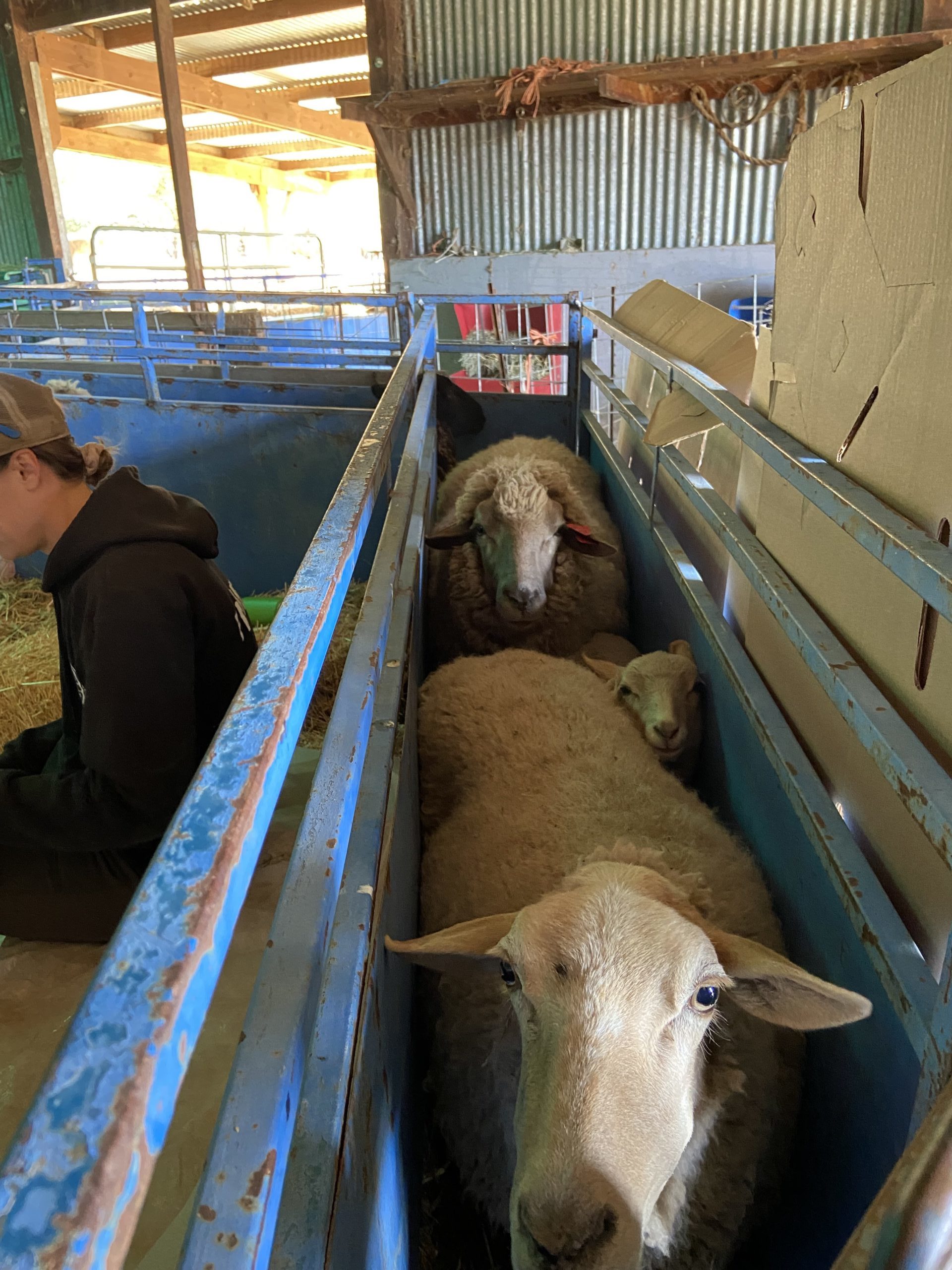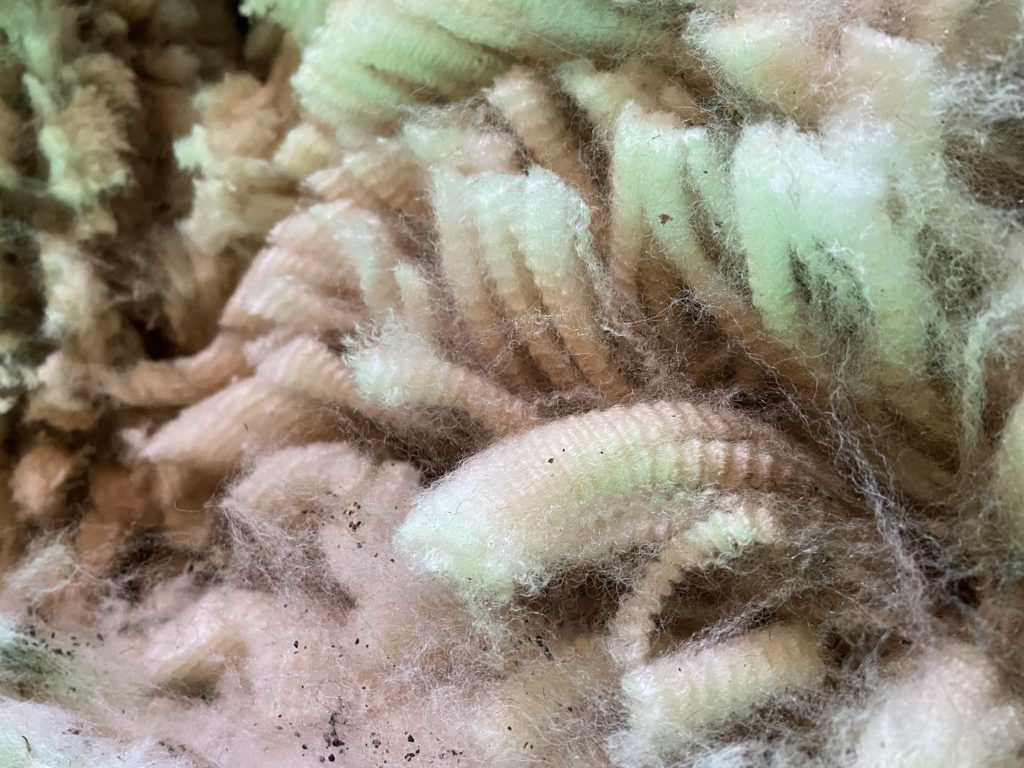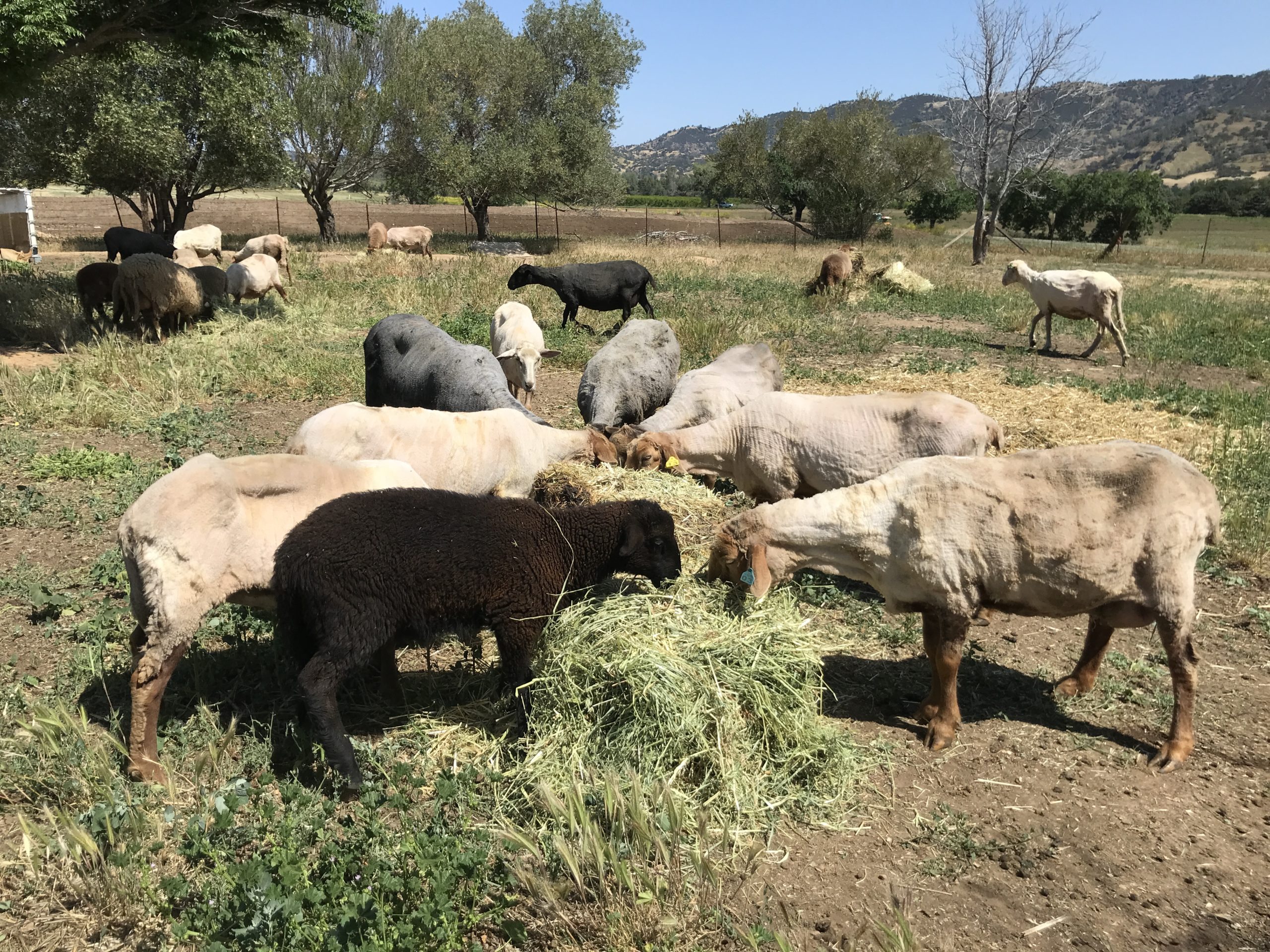
This past week our sheep got their annual shearing. Midday on Thursday I headed up to the sheep barn to survey the scene. Rye graciously answered my (many) questions while ably shearing our flock and I’m condensing and passing along that information here.
Here’s the scoop:
Rye, along with friend of the farm Olivia Raine, sheared 85 sheep over the course of two days, including extra time to fix broken shears. Only the ewes (including a few yearlings) were shorn; the lambs born this year won’t be shorn until next year when they’re a little over a year old. Of the 85 sheep, about 20 were first-timers. Is it easier to shear a younger or an older sheep? Apparently it depends on each sheep’s individual personality, but the older ones tend to be more relaxed while the younger ones struggle more. Often the older sheep also have looser skin, which makes them easier to shear.

Both shearers used electric shears and followed the “New Zealand” pattern, which is supposed to cause the least amount of stress for the sheep and the shearer. The sheep is held between or against the shearers legs while they remove the fleece, following the shearing pattern (belly, left hind leg, head, neck, left front shoulder, left back, right shoulder, right back, right hind leg). It’s hot, hard, dusty work.
We shear our sheep once a year. We do it in spring once the sheep no longer need their fleece to protect them from the cold and before it gets too hot for them or the shearer. We have a few breeds of sheep (California Red, Merinos, Rambouillet, Lincoln, and Suffolk) but they’re all dual-purpose breeds, meaning they produce good wool and meat. Some breeds are triple-purpose (wool, meat, and dairy) while some are single-purpose. The goal isn’t just to remove all the fleece but to cut the wool as long possible because long fibers are easiest to work with to make yarn.

Once removed from the sheep, we send the fleece off to Green Mountain Spinnery in Vermont and it comes back as yarn or roving, both of which are organic! We currently have yarn available in the web store and at our farmers markets. We’re exploring other products in the future.

Rye said that over the nine years he’s been shearing sheep, it’s become one of his favorite tasks, despite how difficult it is. Why? In addition to it being tangible work with an immediate payoff (unlike planting vegetables), he feels a connection to the sheep and the continuation of a symbiotic sheep-human relationship that’s existed for thousands of years. The sheep did not respond to requests for comment in time for me to include their thoughts today. But as the temperatures heat up, I can only assume they’re glad to be a little cooler and the older sheep know that given a little time, it’ll grow back and they won’t look quite so naked.
– Elaine Swiedler, CSA Manager

